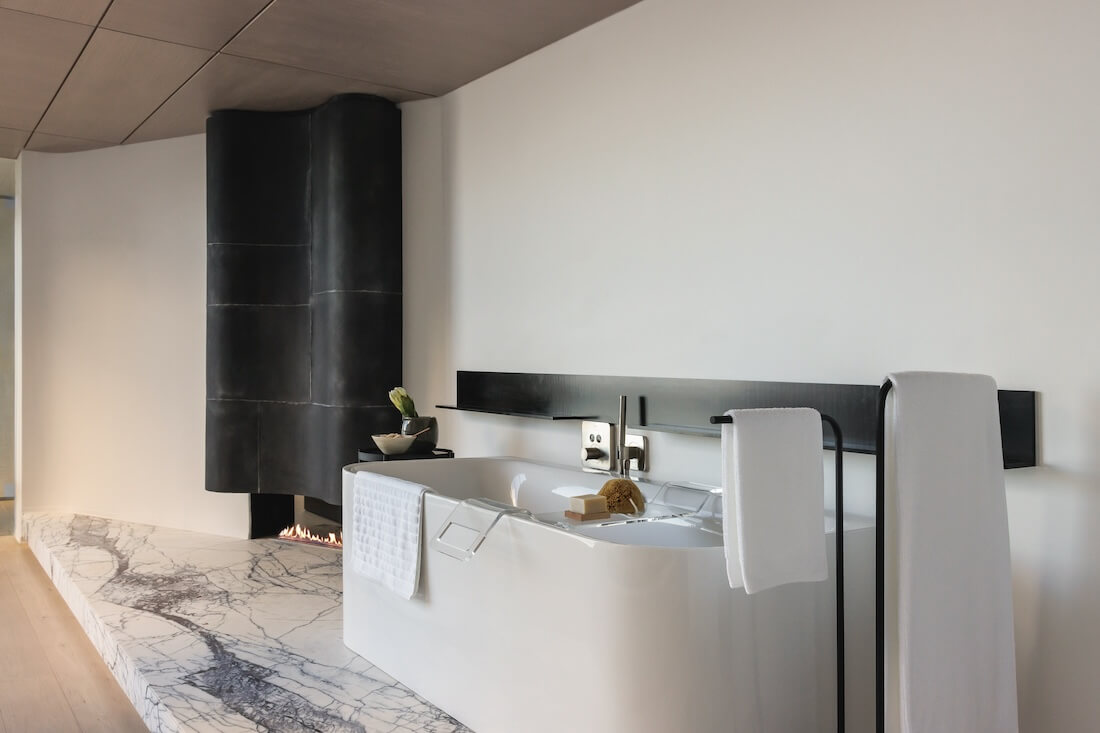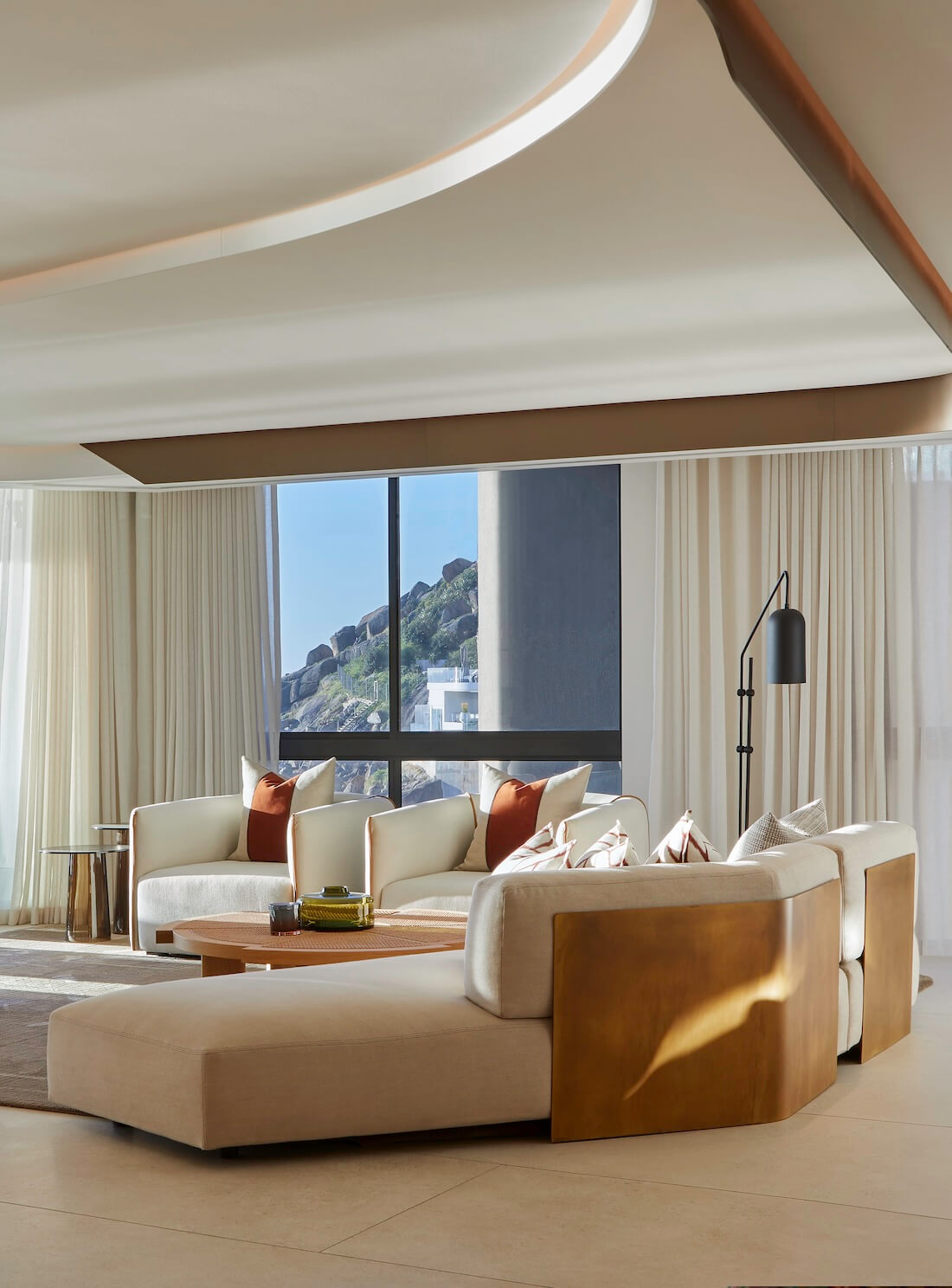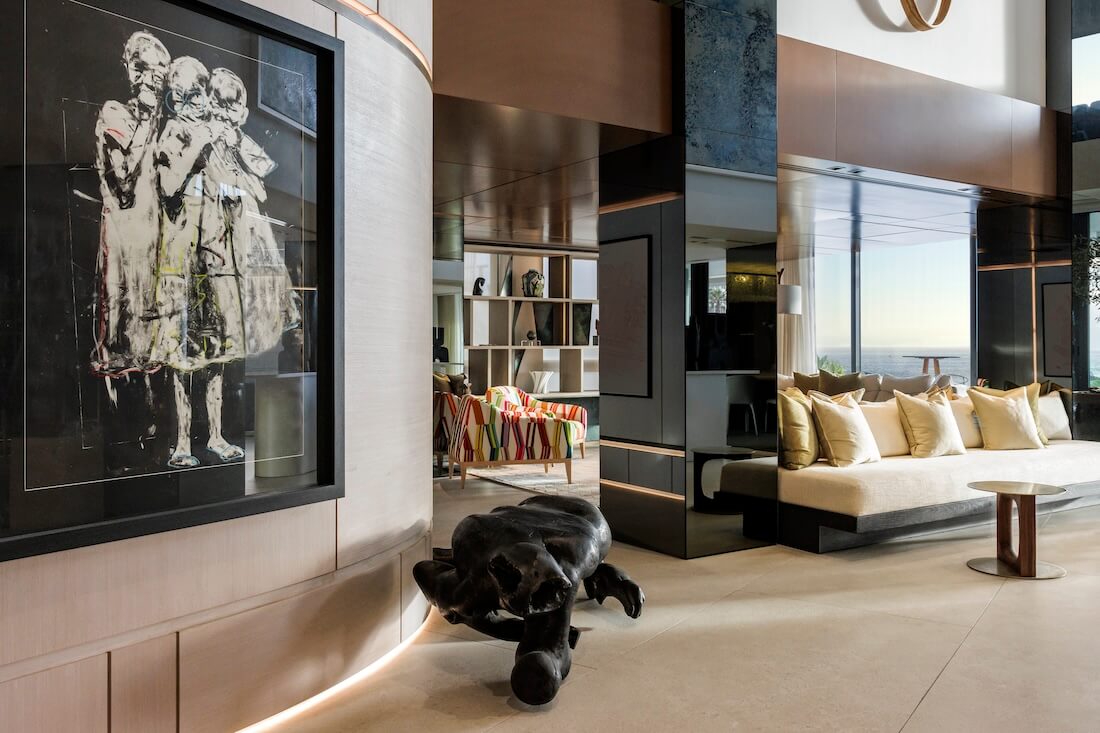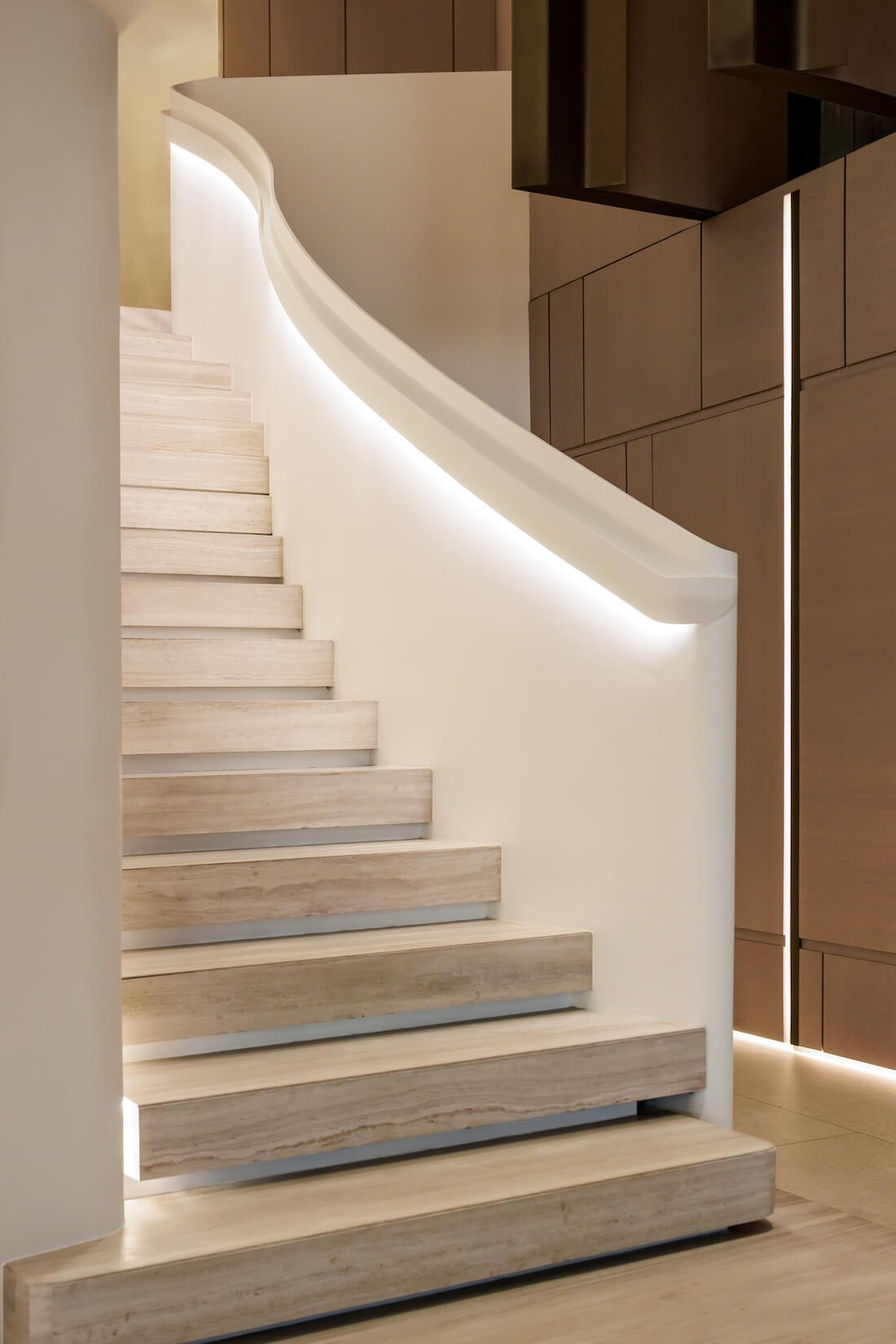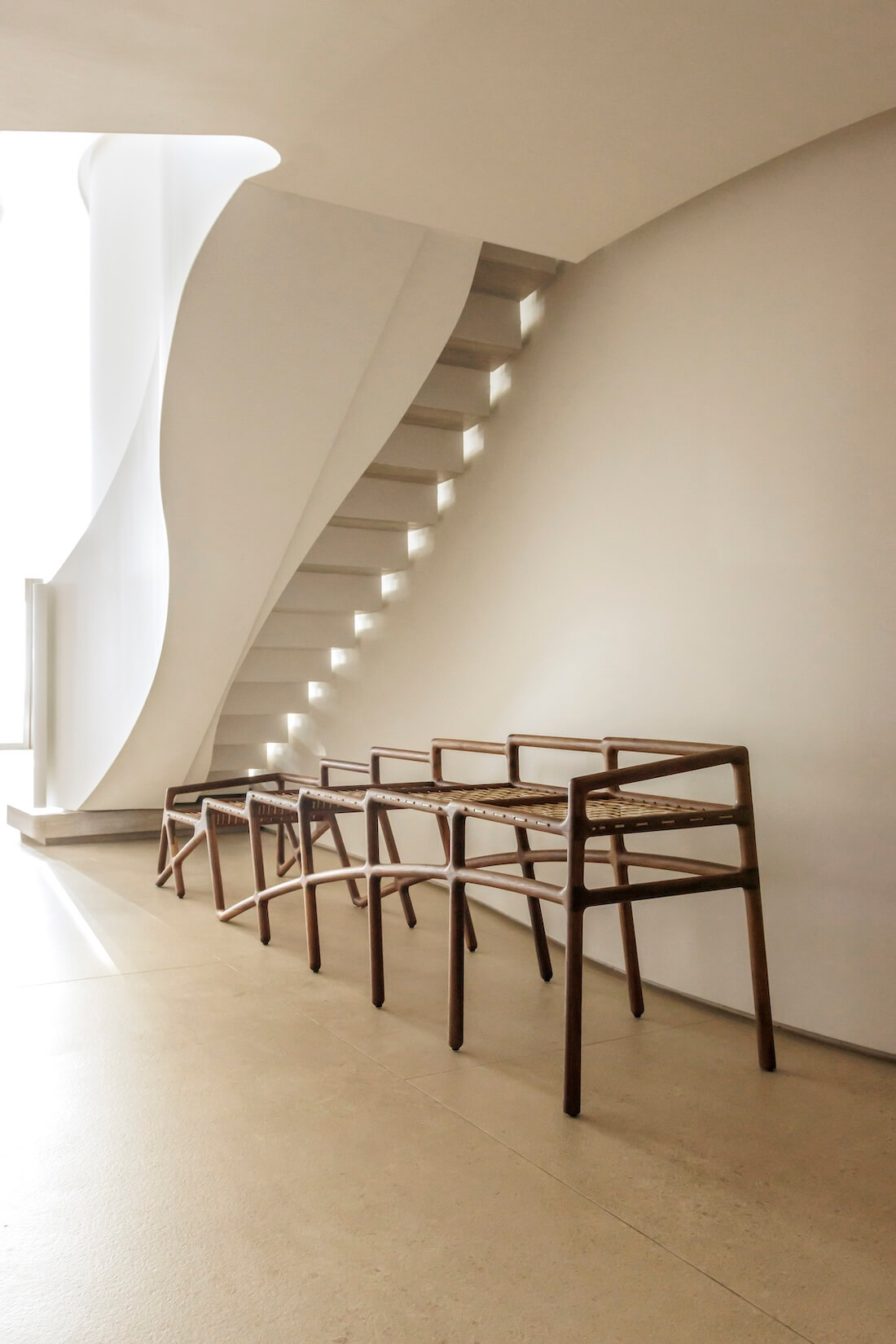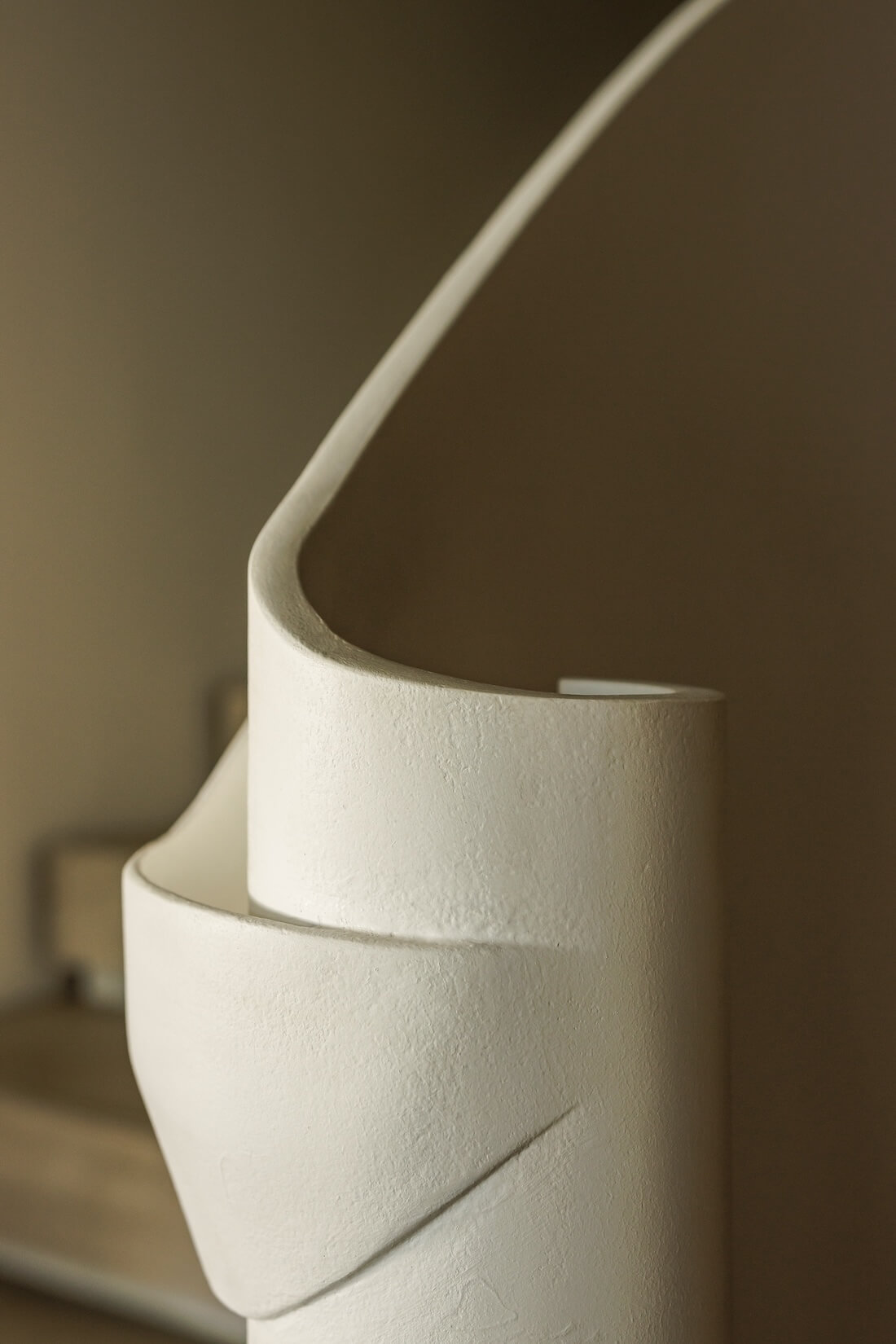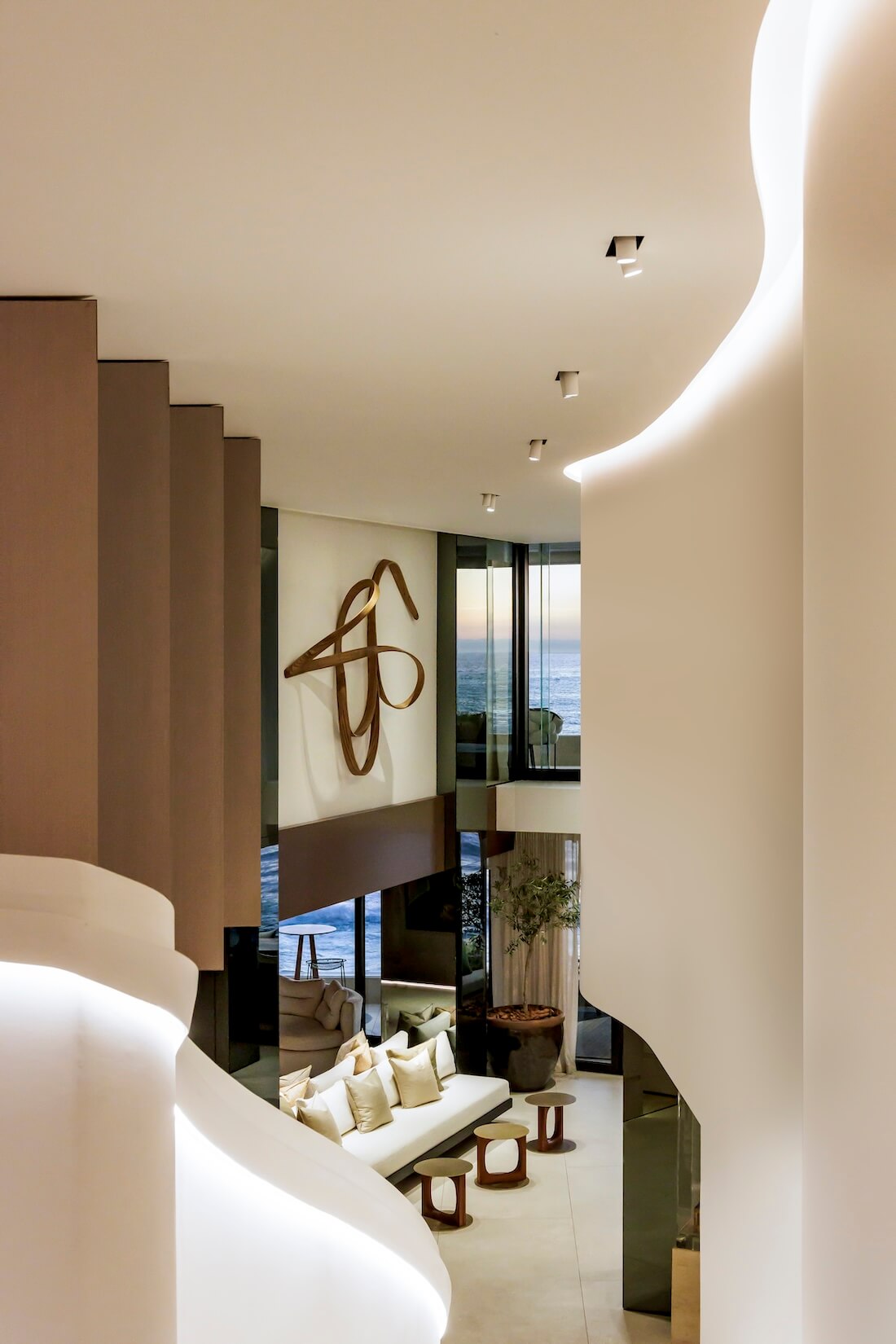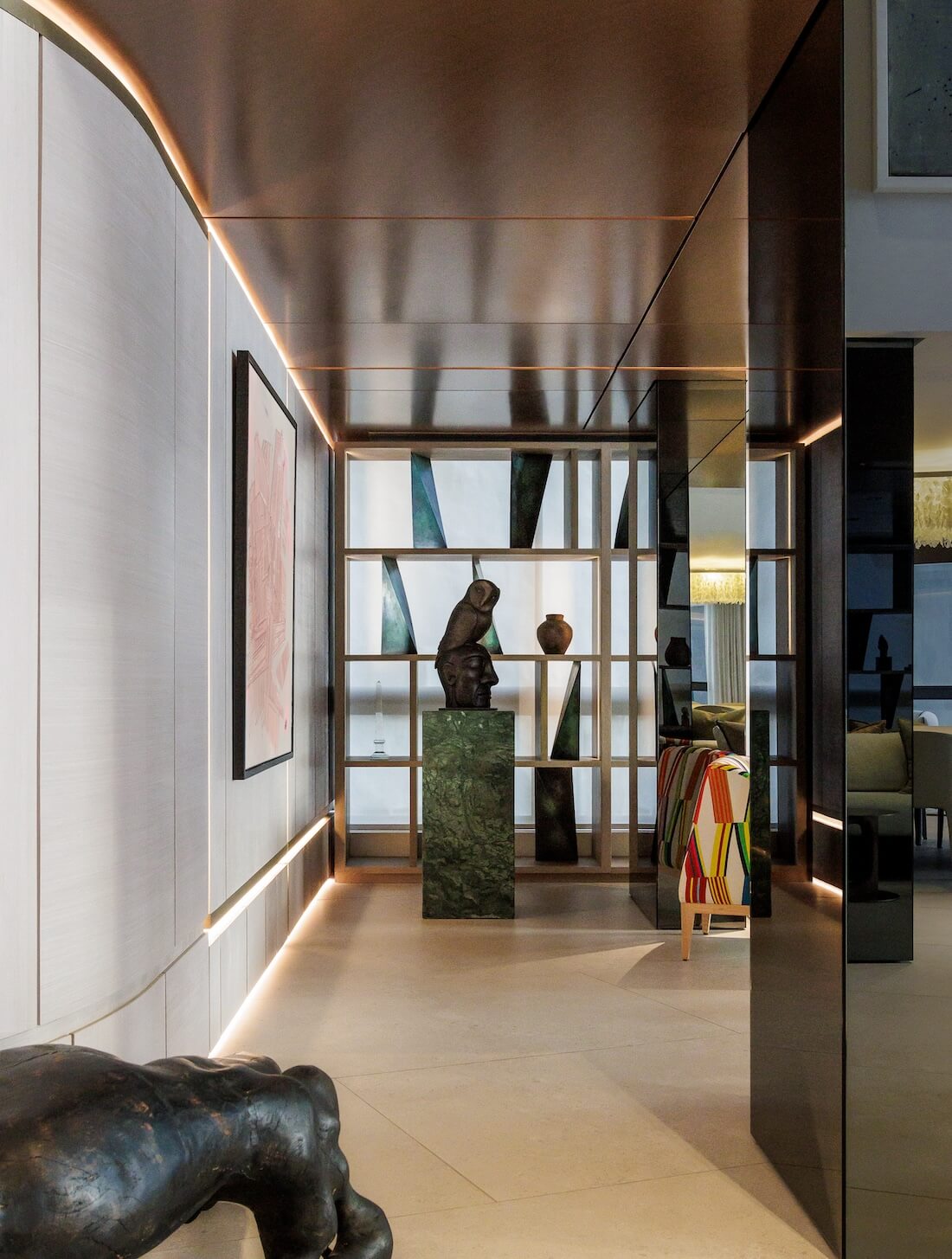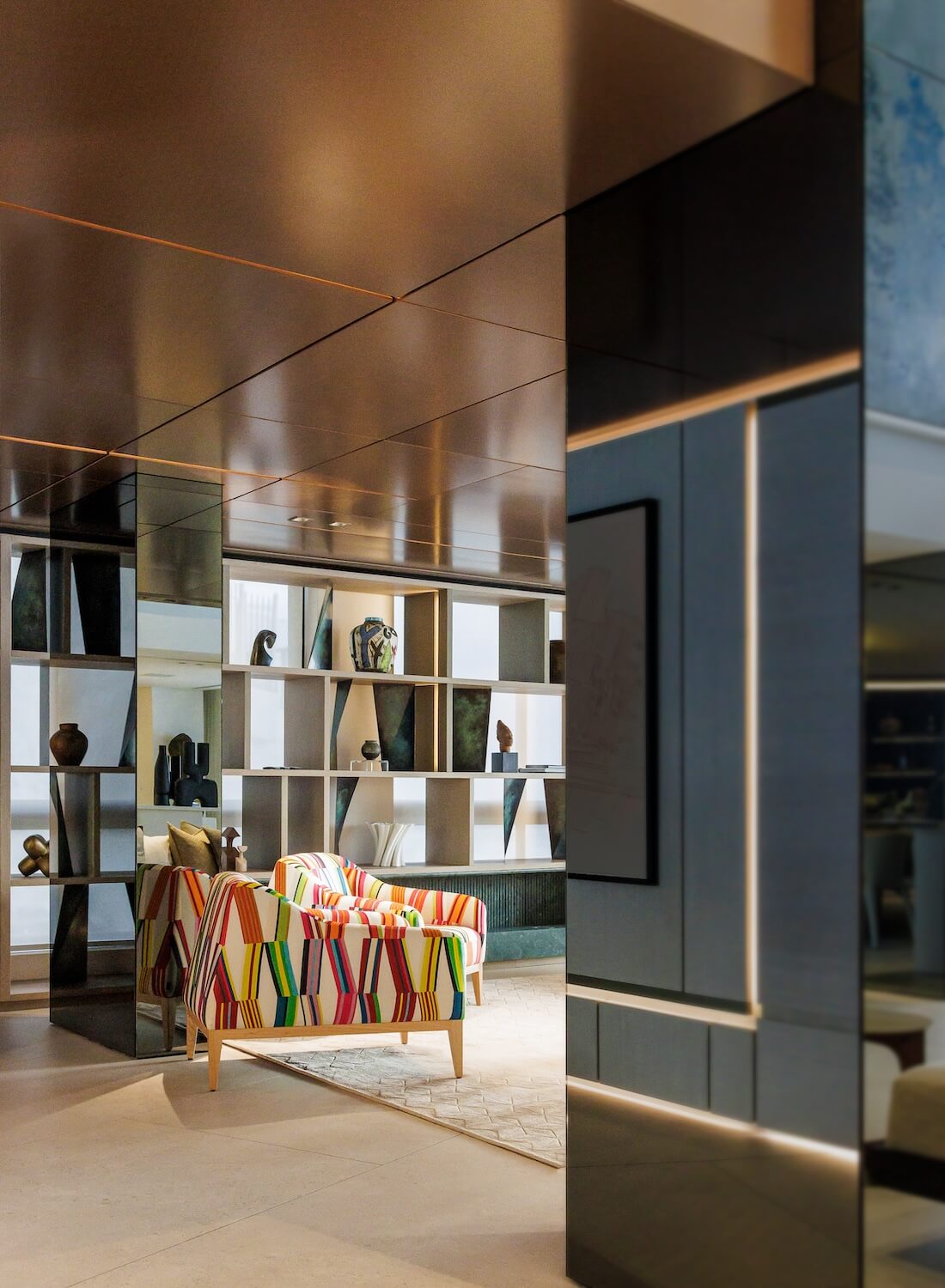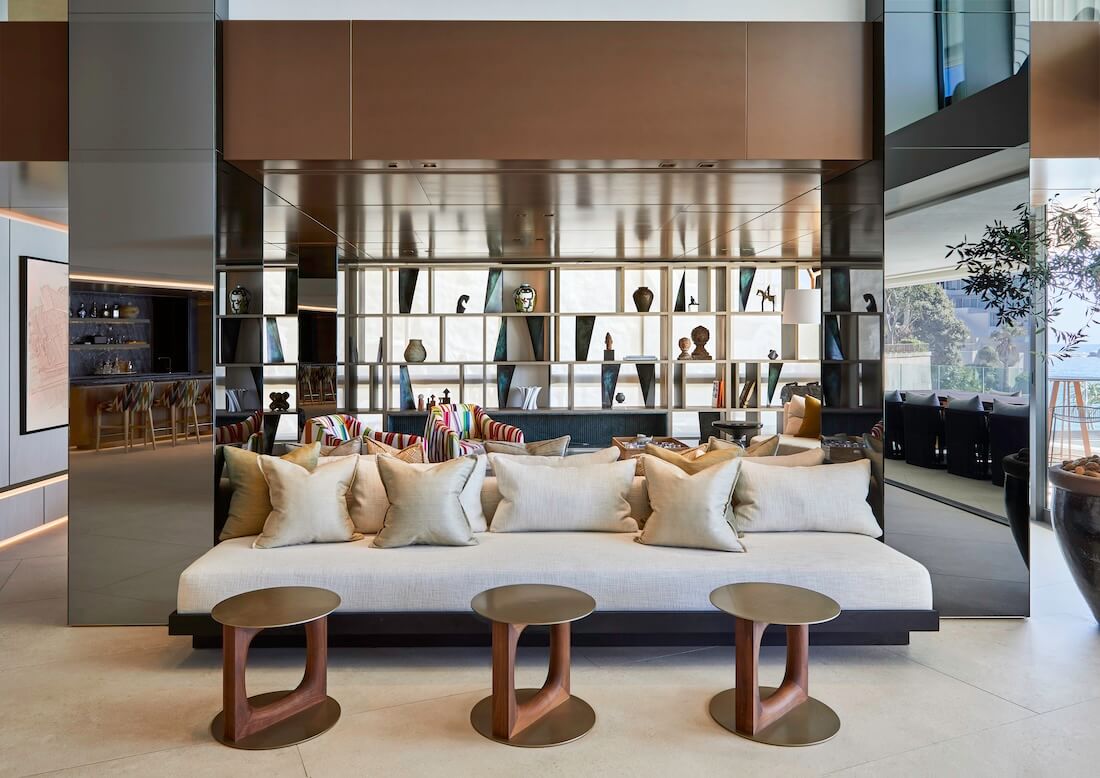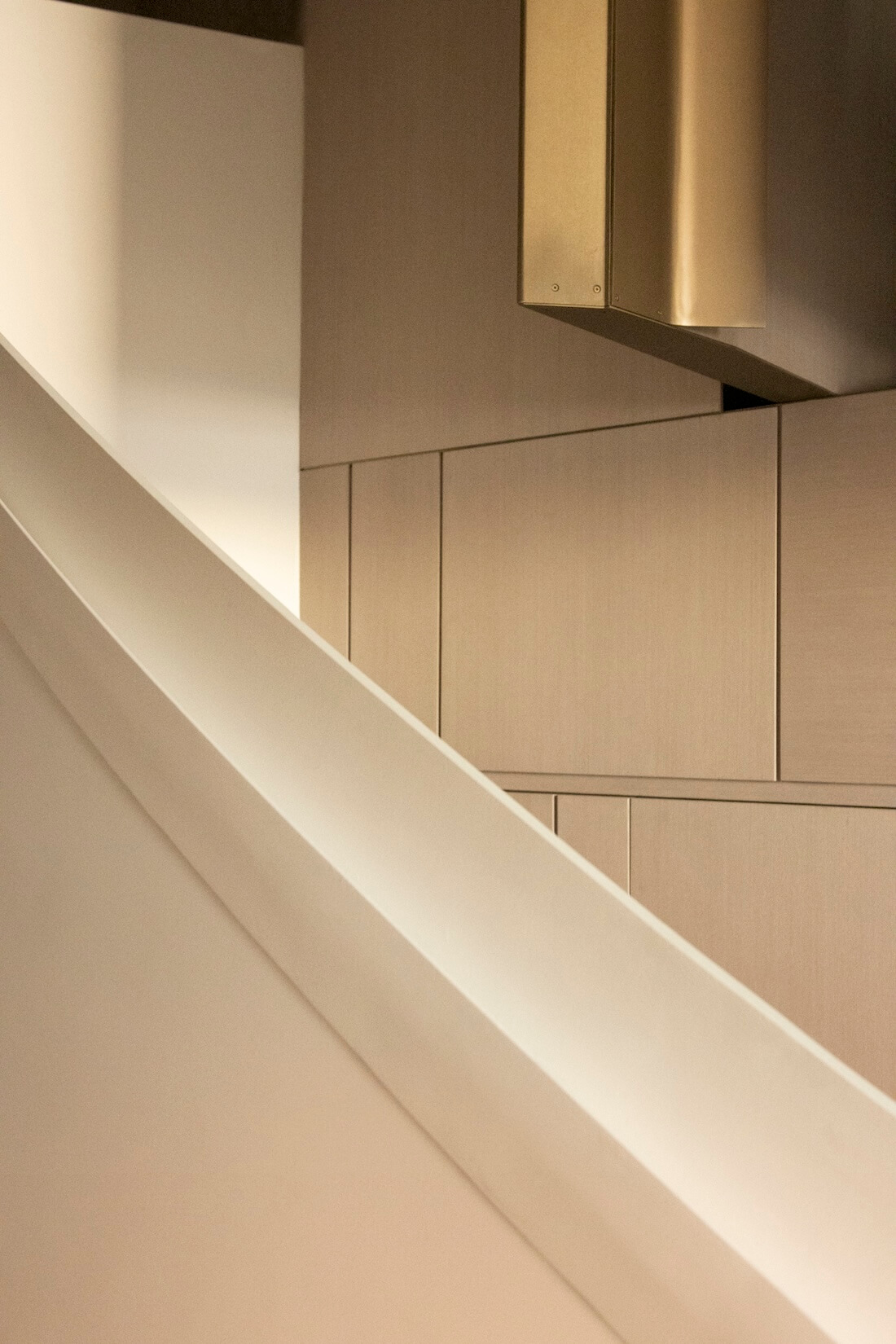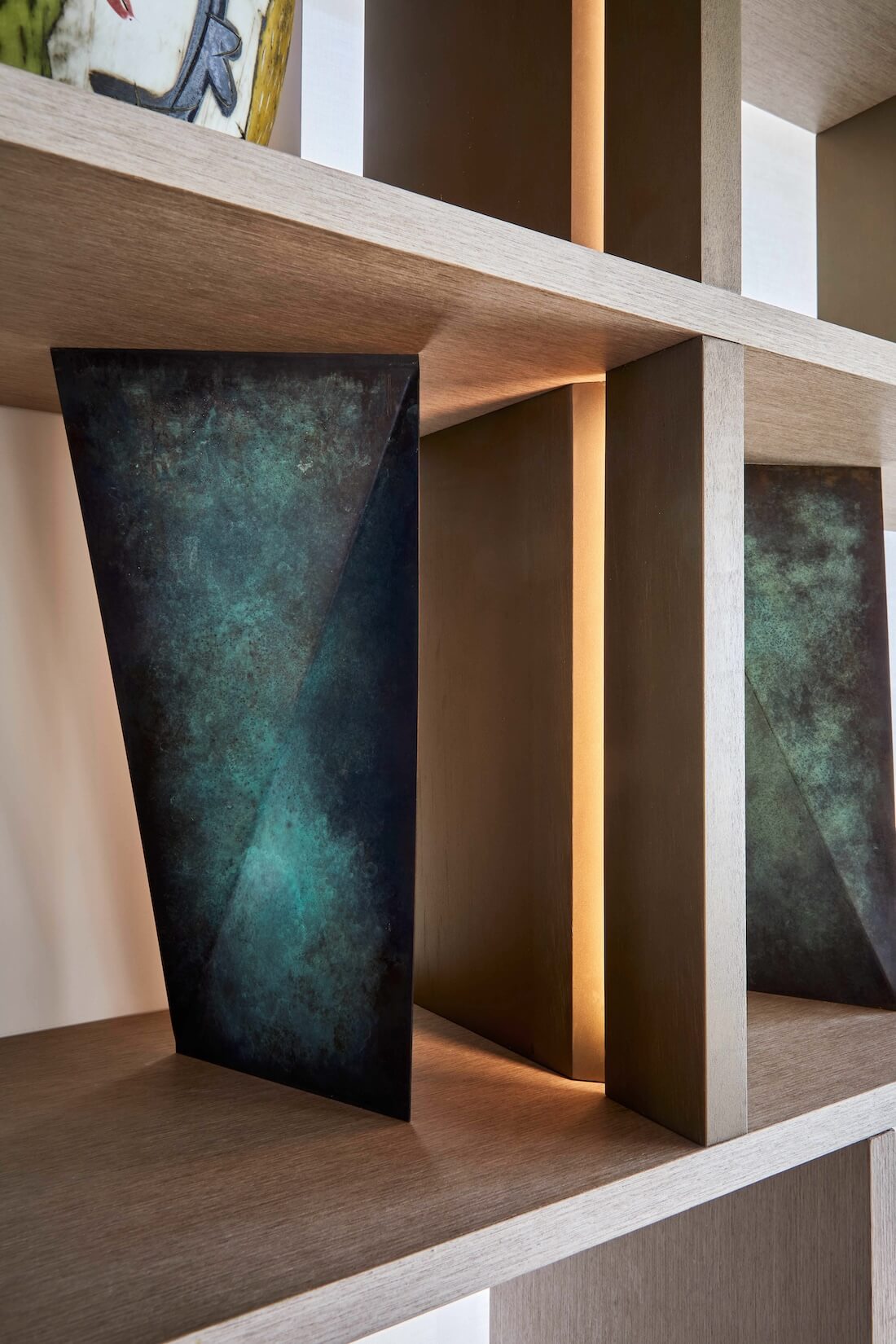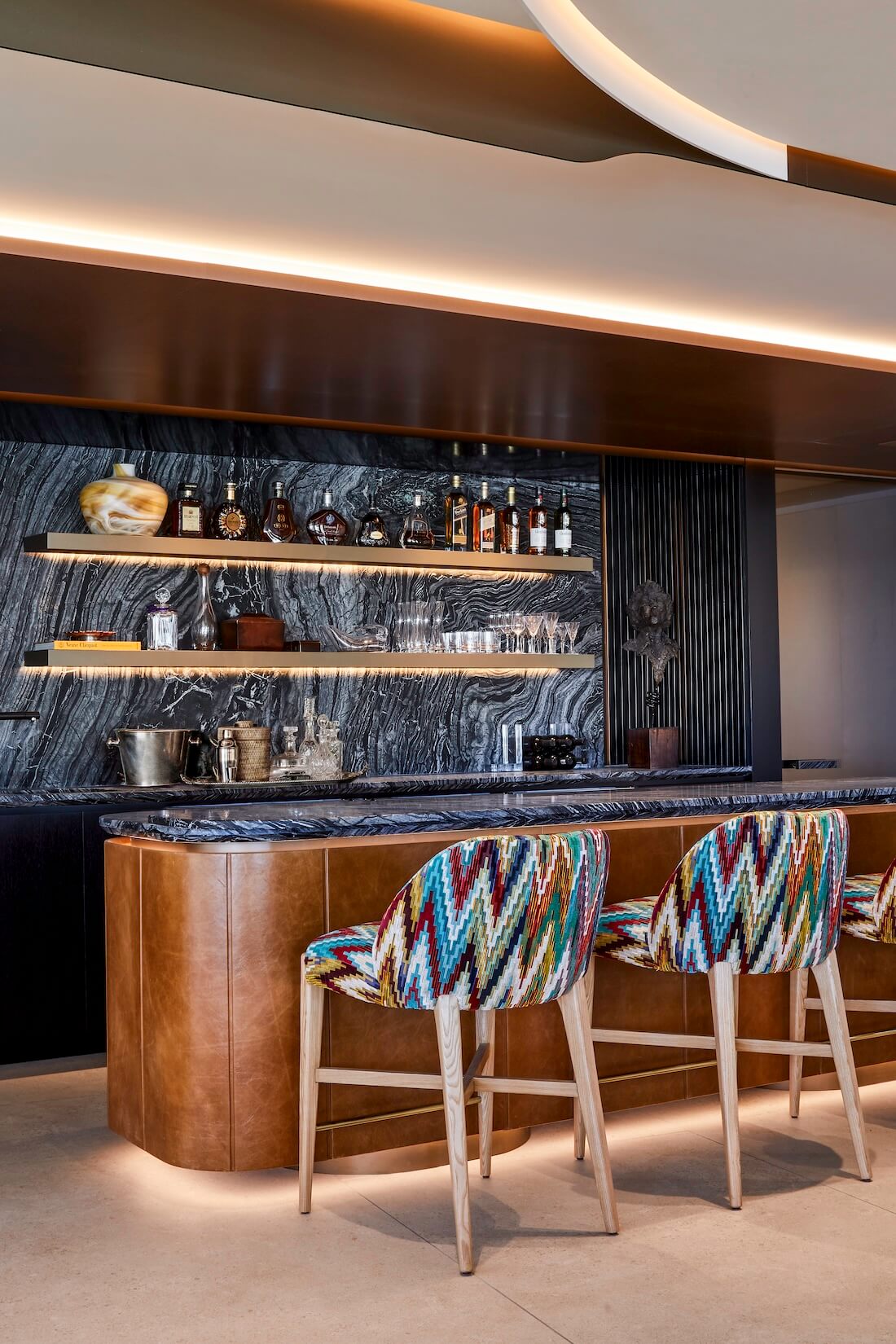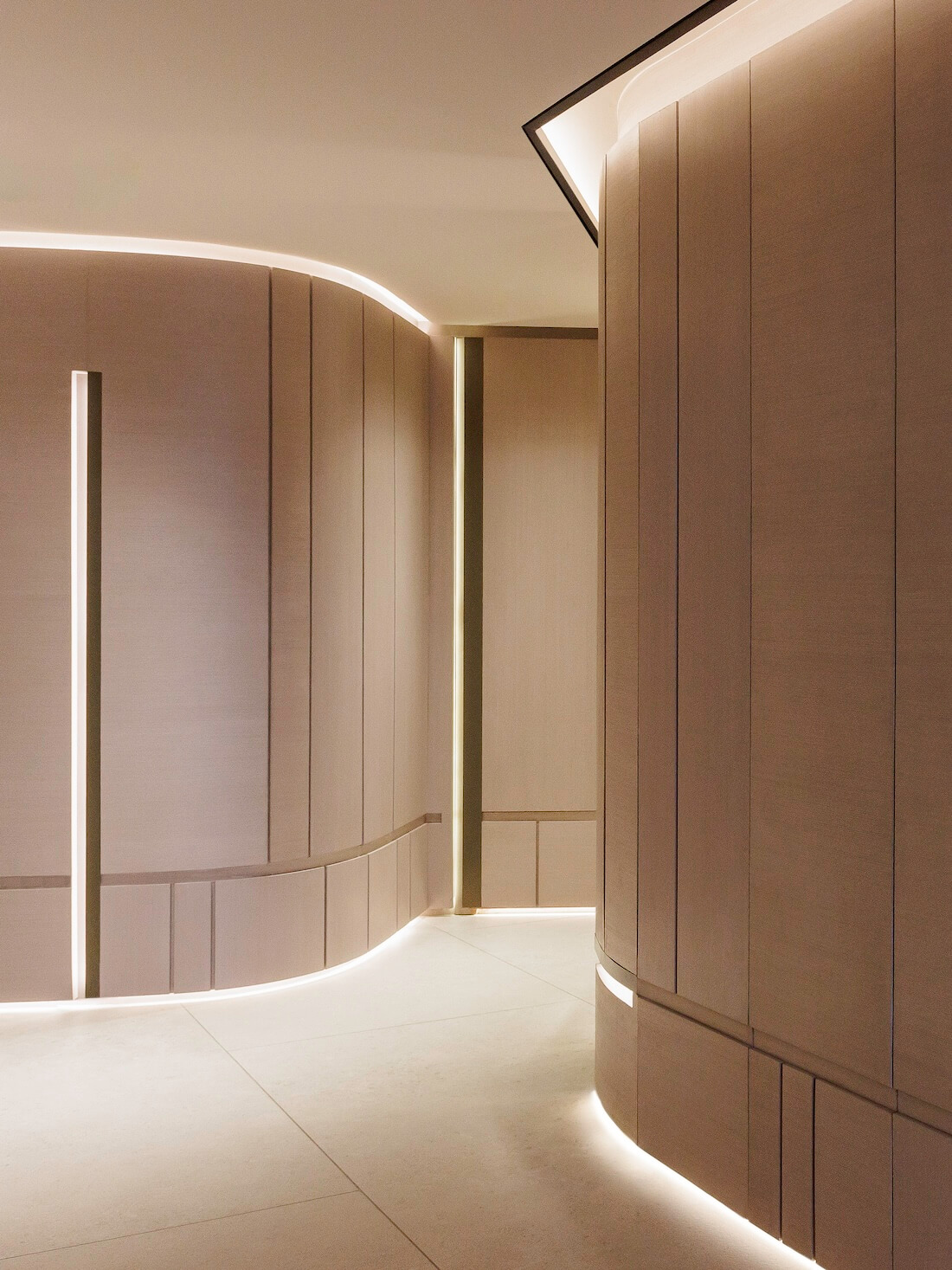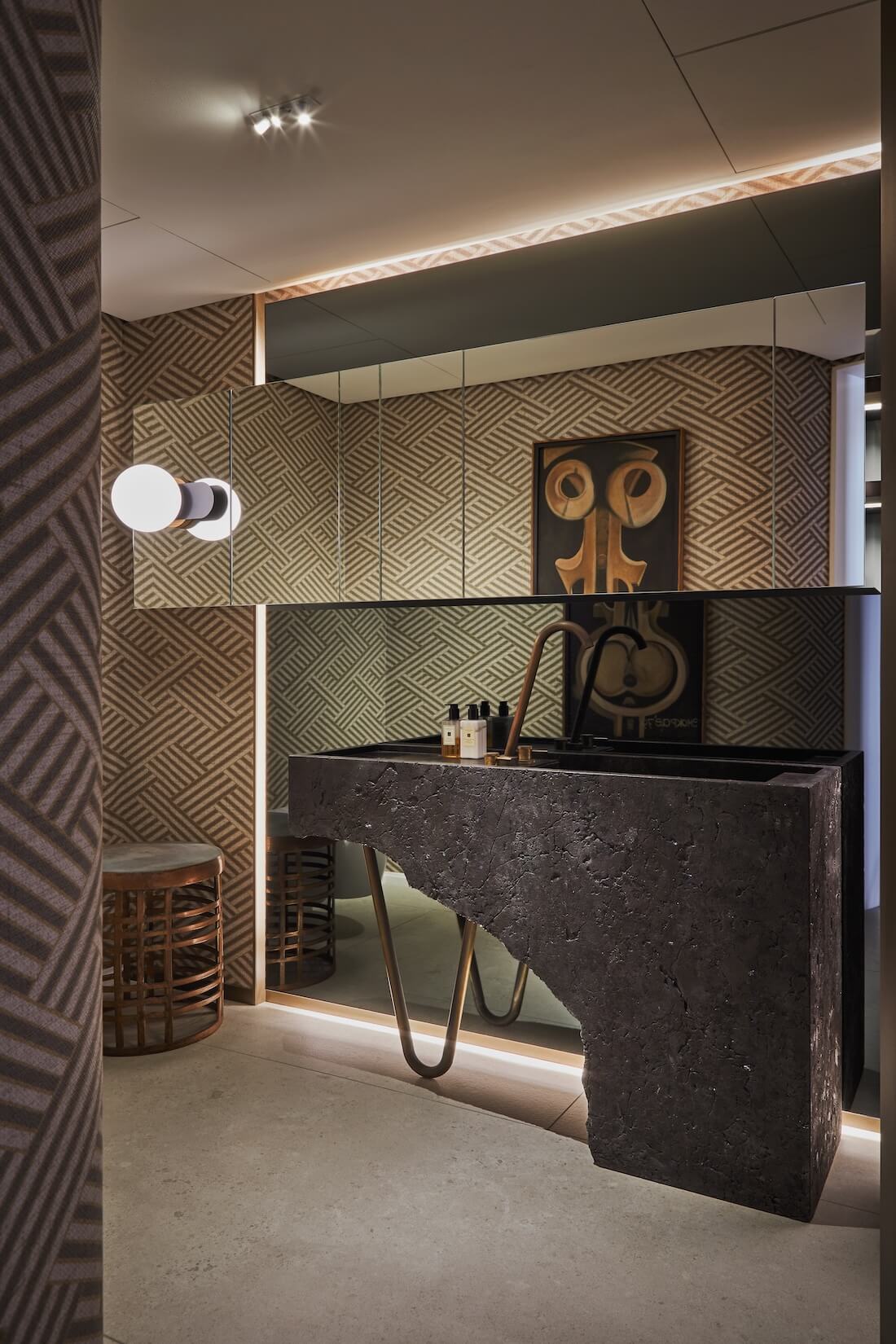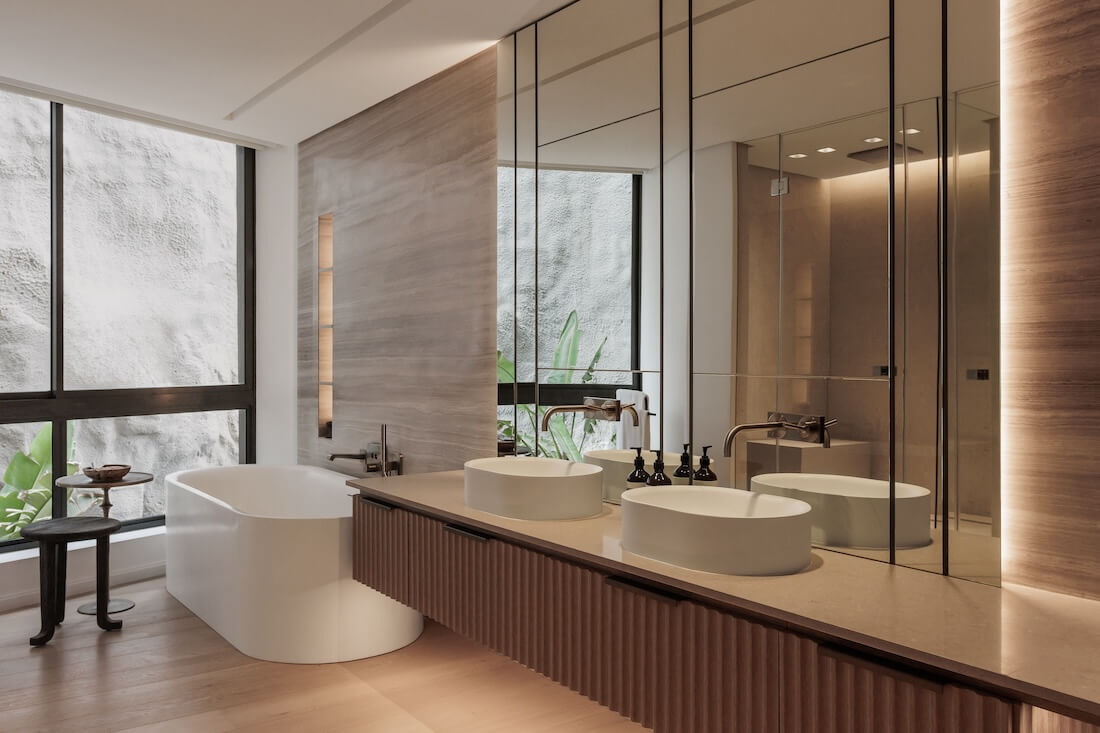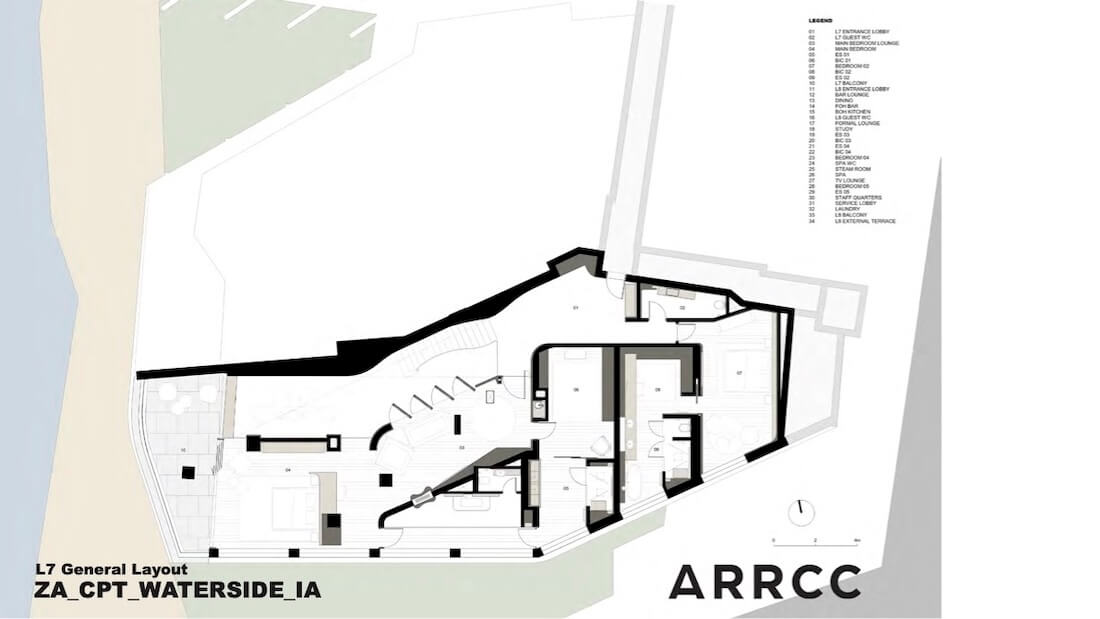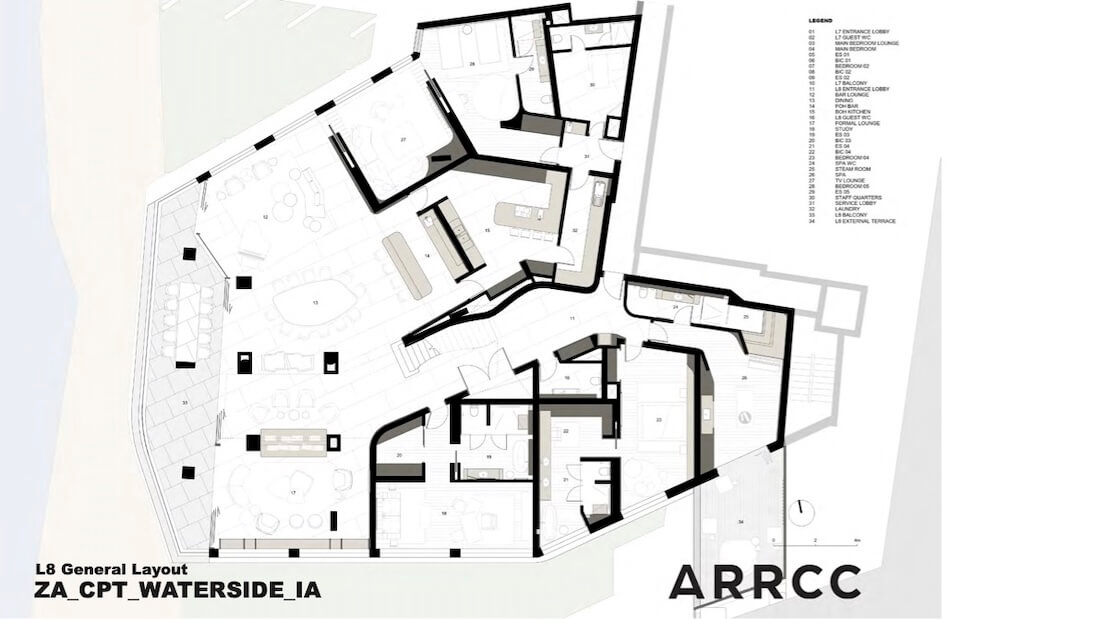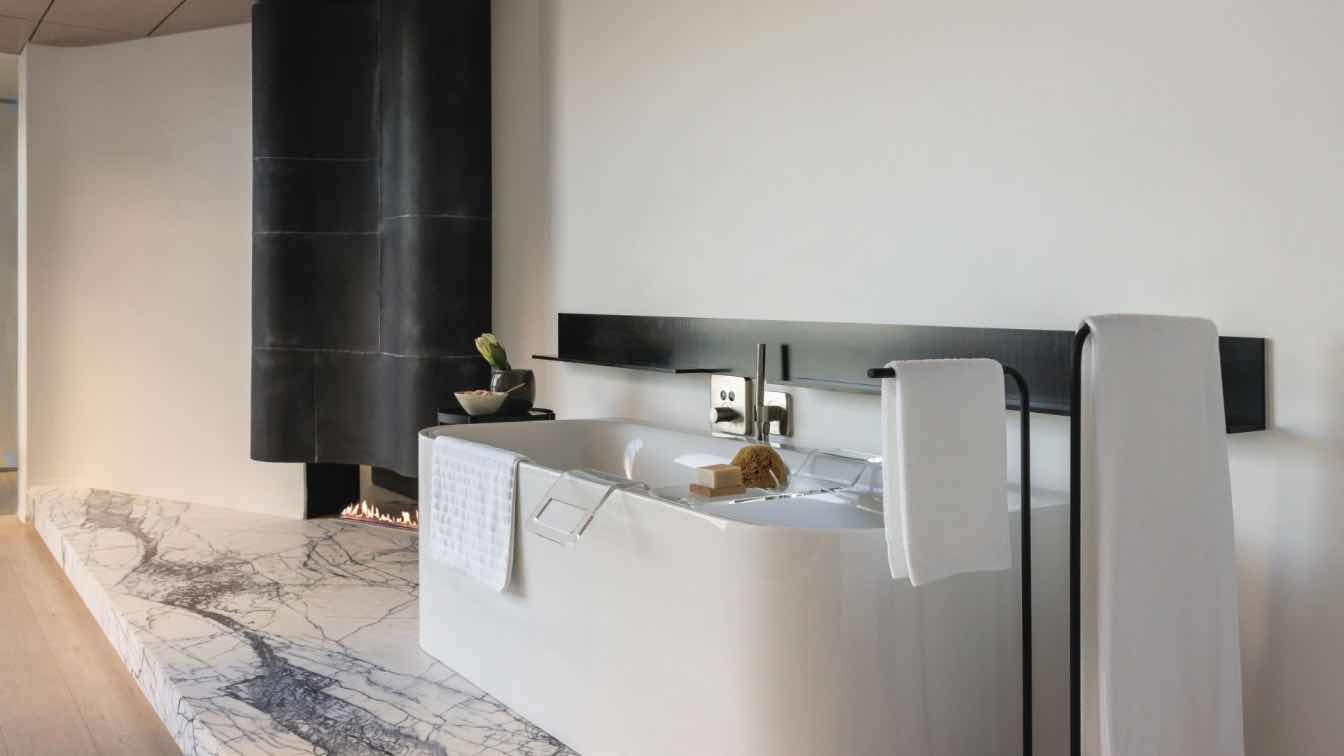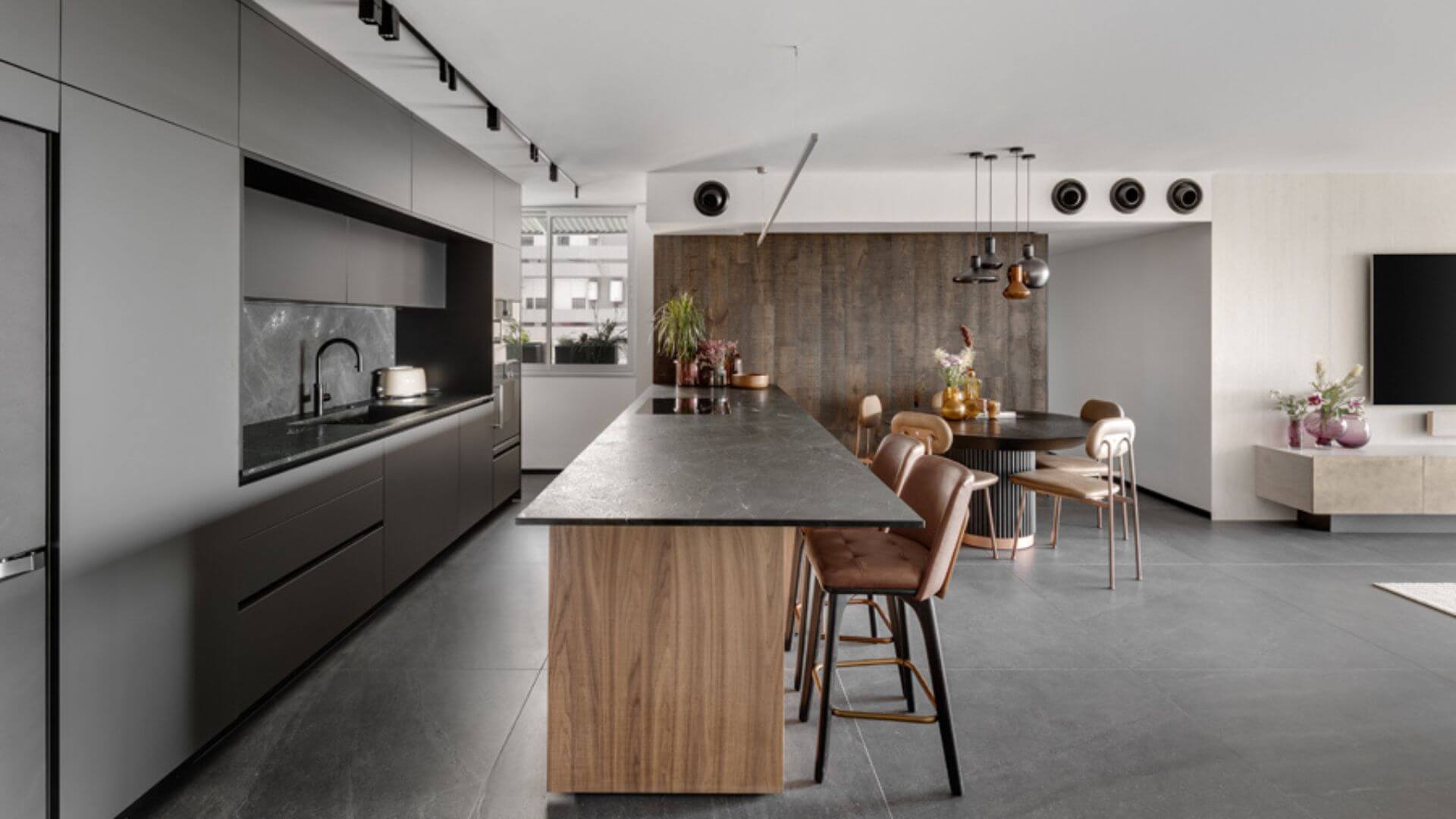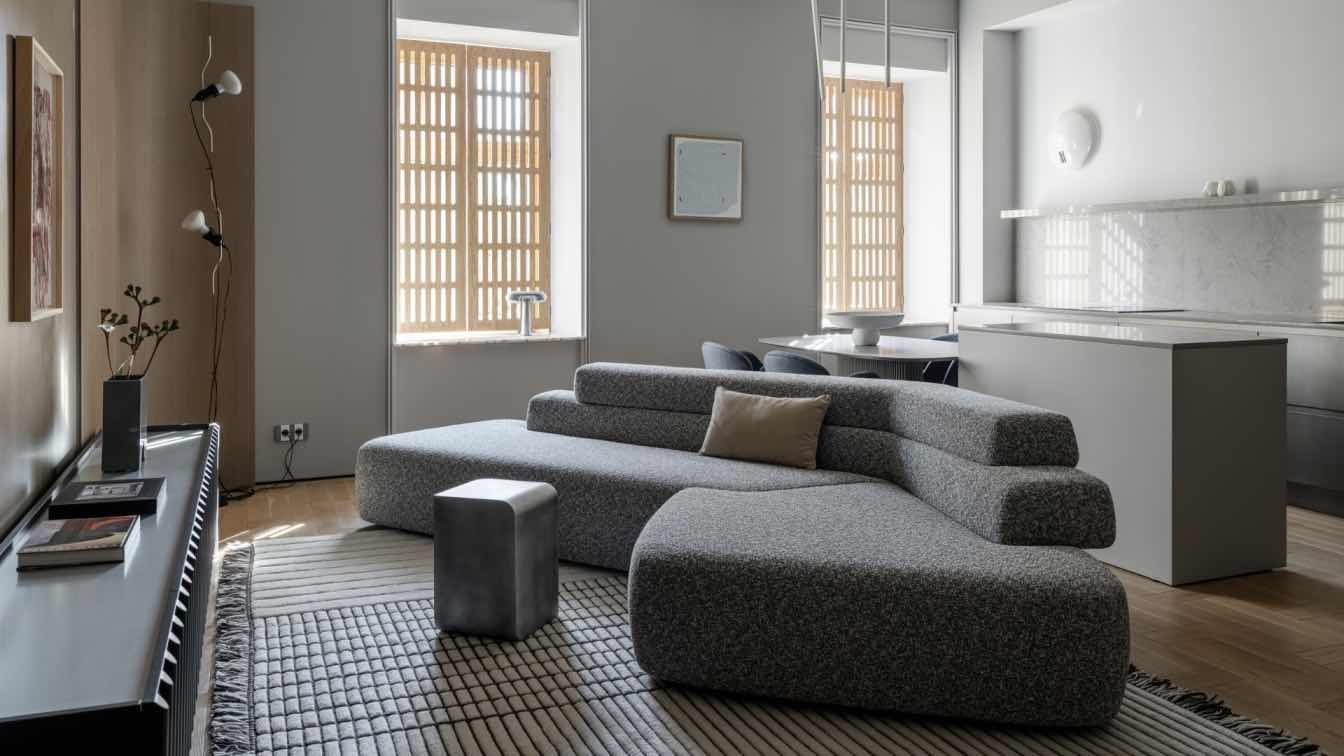Waterside is situated in a nine-story beachside apartment building in Clifton, Cape Town, designed by SAOTA in 2009. Interior design studio ARRCC, in collaboration with Karen Stanek from KS Designs, had the task of merging three apartments over two levels.
ARRCC’s first priority was to redevelop and unify the floorplan with a particular emphasis on celebrating the entrance. Towards the front of the apartments, they removed the slab to create a fully glazed double-volume central living space that opens onto a sea-facing balcony, inviting natural light deep into the interior.
A grand entrance, relocated to the top floor, now overlooks the living space for a radically different spatial experience offering glimpses of the ocean beyond. A sinuous staircase and undulating walls at the entrance take creative inspiration from the shapes of boulders on the beach below and the contours of the cliffside, expressing their natural presence while simultaneously enhancing the flow, orientation, and integration of the spaces throughout the apartment.
The master suite on the top level is designed to function as a self-contained wing that can be incorporated into the rest of the apartment via a series of louvers, which also unlock additional views.
Four en suite bedrooms, carefully configured so that they all have access to natural light, are located on the periphery of the lower level. This level includes a central lounge, dining room, front- and back-of-house kitchens, as well as a bar lounge and separate TV lounge.
Previously obstructive support columns have been integrated into the interior architecture, holding spaces and framing views so that their presence is barely discernible. They also modulate the relationship between the double- volume space and more intimate areas such as the library and dining room.
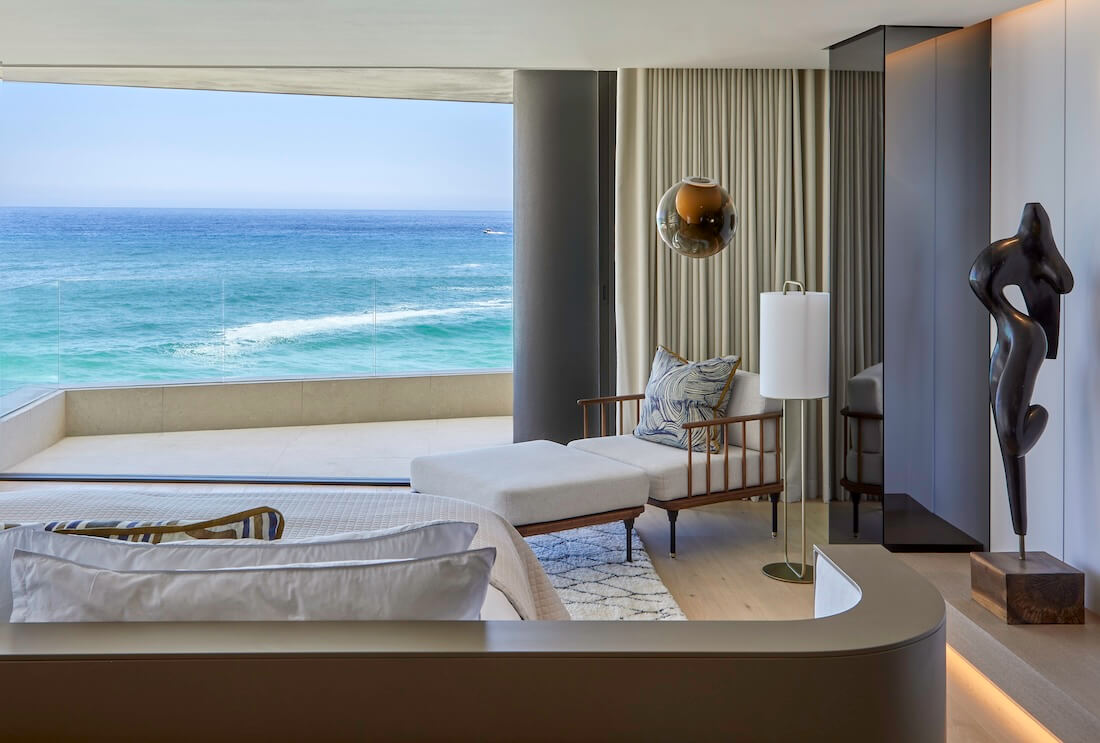
Natural materials such as marble and timber have been selected to evoke the surrounding environment. Other features, such as the wave-like wall at the entrance, are finished in simple plaster and paint to emphasize their form. The bedrooms and bathrooms are finished in calm, sophisticated neutrals, including limed oak and a classical combination of black-and-white marble, in contrast with the pops of colour and pattern in the social spaces.
The timber wall cladding has been designed to accommodate concealed lighting, which washes it and accentuates it as a feature throughout the day. In fact, light fittings and other services are concealed wherever possible, and strip lighting is intentionally included to maintain the seamless continuity of the timber interior wrapping keeping walls, floors, and surfaces uncluttered by lamps.
The interiors themselves hold as much gravitas. Led by KS Designs, and driven by the client's keen eye for design, colour and texture, the use of smoky mirror, oxidized copper, and green marble throughout the apartment all evoke the hues and textures of the seashore. This further manifests in the spectacular “Fire + Ice” lighting piece by Stephen Pikus, incorporating the use of recycled glass. Other custom-designed furnishings, such as the dining table by OKHA and the ribbon-like wall installation by Louw Roets, deepen the dialogue between forms, while soft furnishings offset shell and coastal elements.
Other custom-designed furnishings, such as the dining table by OKHA and the ribbon-like wall installation by Louw Roets, deepen the dialogue between forms.
The delicate balance of richness and restraint creates an understated backdrop for the owner’s curated collection of contemporary art. Together, all these elements of the redeveloped interior create a powerful and compelling response to place, space, and user experience.
